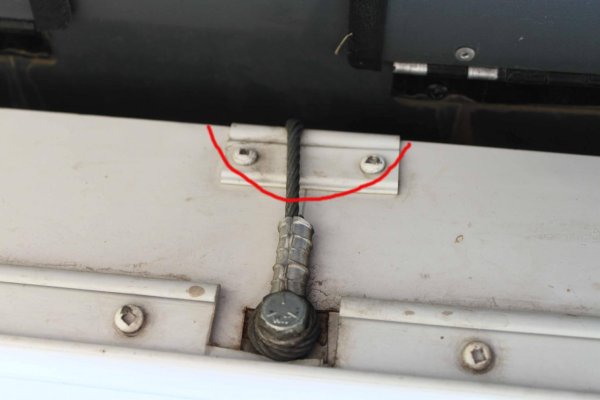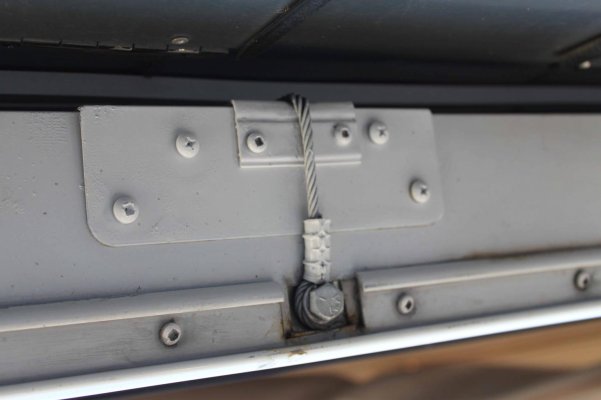I agree. I think the safety bar is just that...a safety bar. I do not think it was intended to support the weight because of its size. I know when I jack aircraft, I relieve the pressure on the jack. You can't go wrong by following the manual.

I want to ask and point out, did the safety bar design change? if it has, since my 95 model, I didnt know this... As far as I have ever seen, the safety bar only lets the Hydraulic Cylinder rest, the full weight of the top half of camper is still on the cables, and also straining against all the pulleys, and side of the bottom of the top half where cable attaches. Dont forget, that plate that is attaced to the cylinder ram and they place where the adjusting bolts got through the frame, all are under this stress load.
Based on This, and maybe I am all wet, as this is just my speculation. I believe the safety idea is specified back in the day, that the cables were assumed to be new, full strenght and probably since they were spec'd to be more than 10x stronger than specified minimum strength to lift each corner (percentage of the weight of the top half, when level) they (the designers and safety people) figure that a hole or leak in hydraulics was sufficiently eminent( or more probable ) than cable or even those "PLASTIC" pulleys they used would fail, so "safety idea" and other factors bearing on a hydraulic jacking system, the solution was to lowere the jack (that pump plus the hydralic ram is a glorified jack) onto jack stands (aka the metal safety bar), and with orings and hoses failing since jacks were invented, this is why the safety bar was designed. to minimize hydraulic failure as well as the creep all jacks seem to do, when left up without support, over time.
I believe the above is worth reiterating, traveling with the cables carrying the load with hydraulic or on the safety bar itself, changes nothing about how much strain is on the cables have,
when not moving and since assumed LEVEL since we all try to be level when camping right? but when you are moving you can cause (just by tipping camper side to side on unlevel roads) not counting jolts from bumps acceleration or even braking, pot-holes and what not, to cause any one cable to surpass its maximum weight limits of any one cable, at some point. TO me, THIS the main reason why you dont travel in the UP position. wind, changing dynamics of which point now is carrying the substantial loads on cables varies so much more when traveling.
I know you all know what I mean, if you have ever carried something as simple fully distributed weight of a heavy object, like a big heavy wood dinning room table or anything? Have you ever got stuck with the lower end? where when table; when it is lifted level, half of the weight is at either side or end, but tip one end down, suddenly that side has increased weight to be carried, more you tip it the more that poor person had to carry, then you have a gorilla jump up and down on it, you better be olympic weight lifter or you will drop that table (assuming it is actually heavy to begin with) ...
Plus storing with cables strained all the time (up) just seems like hanging your hopes on a jack under the car, instead of jack stand at that same point, that resist collapsing.
The last consideration when it comes to any camper, is that there are several hundred consessions or compromises for ANY part used for a camper, from weight, cost perspective. that is why we dont have 40 gallon water heaters, the cost of the heater, the "space" et al. I believe the weight vs if you follow guidelines of not towing while camper is expanded or up, means that the top has a static weight (- or + say things figured when designing, like weight of rain water or snow or effects of high winds) were figured when they had to decide how strong to make that safety bar. bouncing off a curb, just for one example could probably pretzel that safety bar, I know darn well it would in my 5th wheel 29 footer. maybe less likely on that 17 footer?
DId I explain that well enough to see what I mean?



